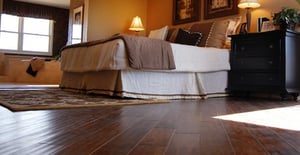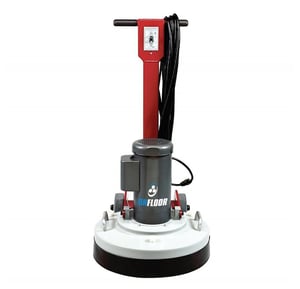Replacing floors is one of the biggest organizational expenses, with regards to building costs, due to the high price of materials, necessary manpower, and inconvenience to and loss of productivity of workers in the building. Minimize this expense by protecting your floors for the long-haul using proper sealants and finishers.
Sealers protect your floors against stains and damage, which minimize the lifespan of your floors, create an unattractive appearance, and even cause workplace accidents. Some sealers and finishers can also be used to give floors a glossier, more appealing presence that will delight your employees and clients.

What Are Sealers and Finishers?
Sealers and finishers protect your floors from damage common in commercial spaces.
Sealants are chemicals that soak into the pores of the flooring. The sealant then clogs those pores, so stains and particles can’t get down into the floor material and cause damage. These penetrative sealants thus work best for highly absorbent materials like cork, brick, sandstone, and natural stone. However, some sealants fill the tiny holes in the surfaces of materials without penetrating the floor itself. These surface sealers are good for concrete, terrazzo, and wood.
Finishers protect the floor without penetrating it. They sit on top of the surface of the floor, acting as a defensive barrier. Finishers tend not to last as long as sealants because they do not chemically bond with the flooring. However, finishers work best for expensive or non-porous floors like tile and hardwood.
Some products can work as both a seal and finish, protecting from both deep-set and surface stains. Our Focus ZF33 Seal & Finish does both without the use of heavy metals, formaldehyde, or ammonia.
Different sealers are used for different flooring materials as well as for different hazards. For example, concrete densifiers are made specifically to protect concrete flooring from water and contaminant penetration—which is ideal for garages and warehouses. Diamond Productions DuraCoat is chemical resistant while also glossing and protecting the floor, making it the best choice for interior labs or research facilities.
Sealers and finishers are not the same as polishers. However, some products can function as both a finisher and a polisher. There are even slip resistant sealers, which both protect the floor and create traction to make it more slip-resistant.

What Are The Types Of Sealers?
There are three main types of sealant.
Polyurethane is the strongest and most durable. However, it has a distinct odor and it can be somewhat toxic. Solvent-based coatings are also strong but they are highly noxious. Water-based sealants are the best option for commercial spaces. They are eco-friendly, less toxic, and better for the long-term life of your floors.
We highly recommend using water-based sealants that are free of zinc, heavy metals, formaldehyde, ammonia, and nonylphenol surfactants. These chemicals have been shown to have a negative impact on workers’ productivity and health, as well as on the life of the floor itself. Our high-quality Focus ZF33 Seal and Finish meets the Green Seal™ Standard while promoting strong material maintenance and leaving a stunning, glossy finish.

How Do You Apply Sealers?
Sealants are usually applied right after installation as well as periodic restorations. Some sealants call for annual restoration, others biannual, and still others every few months (depending on the wear and the type of sealant).
Most sealants are applied using a foam brush in smooth, even layers. Because bubbling and cracking of sealant is common, we recommend using a spray applicator to distribute product evenly. This will create a polished, bubble-free look that ensures every inch of your flooring is safeguarded and shiny.
Contact FloorRev to discuss how to properly apply sealant to your building’s floors.

How Can You Improve Longevity Of Sealant?
Sealers and finishers are there to protect your floors, but the coatings themselves can wear down. Reapplication of coats is necessary, but you can lengthen the time between reapplication and improve the longevity of treatment with a regular cleaning regimen.
Proper cleaning will remove small particles that eat away at the coating. This cleaning includes cleansing, scrubbing, and buffing to ensure all particles are gone. However, vigorous brushing can strip away the sealant, so we recommend using a standardized, mechanic scrubber for consistent level brushing while cleaning.
You should also use mild, eco-friendly, pH-balanced cleansers that won’t dull or harm the floor finish. These will also ensure that your floors are not toxic and harmful to employees. The nicer the floors, the better the environment for all members!
A proper application of a sealant and finisher can be the key to unlocking long-lasting, gorgeous floors. Floorcare provides eco-friendly coatings that will ensure your floors and employees have a safe, happy, beautiful working environment.





0 comments